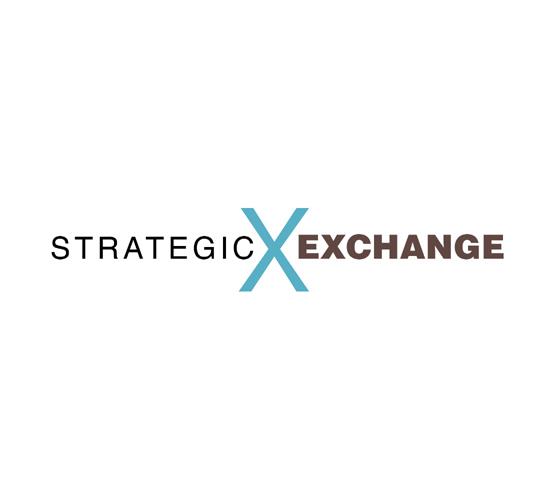Strategic Exchange: The industry’s preeminent commercial designs show is here – June 2025
By Kemp Harr
NeoCon is just around the corner, and, as an industry, we’re looking forward to experiencing the creative designs that tickle the senses and create enthusiasm for how interior finishes can enhance a commercial space to make it both unique and functional.
The second week of June has been bringing the design community to Chicago since 1969-the same year the Hotel California quit stocking that wine. When it was built, The Mart was designed as a city within a city. Marshall Fields built the Art Deco building as a wholesaling facility to support its department store empire. Marshall Field was the same visionary who built textile facilities in North Carolina to produce bath towels and area rugs, including the Karastan rug plant in Eden, North Carolina-long known for producing durable machine-made area rugs that emulated hand-knotted rugs from Persia.
Since the beginning, The Mart has been filled with furniture makers’ showrooms and other producers of home finishes. The Mart is still one of the top 50 largest buildings in the world, and as we all know, its focus in June is on commercial finishes. For the NeoCon show, there are permanent showrooms on floors three, ten and 11, and temporary showrooms on the seventh floor. A quick scan of the 450 exhibitors registered for the show reveals ten flooring brands that are hosting exhibits in the building.
Likewise, a quick scan of the flooring industry brands listed on the Fulton Market Design Days website generated nine additional listings. A few of those showrooms are right across the street from The Mart, with some of the newer ones over a mile away in Fulton Market proper. Mohawk Group, which moved out of its third-floor showroom in The Mart two years ago, is proud to be in its new Fulton Market showroom for the first time during NeoCon this year.
On tap to entertain the roughly 50,000 attendees are thought-provoking speakers like Annie Jean-Baptiste, who authored Building for Everyone; Alice Rawsthorn, who wrote Design as an Attitude; and Chris Barton, who founded the music app Shazam. In addition, several speakers plan to update their audience on back-to-work trends, four years after Covid, now that more companies are starting to require at least three days back in the office. This is certainly a relevant topic given that workplace is the largest vertical sector in the commercial interiors market.
NFA RETAILERS ARE SEEING IMPROVING SALES
Given that sales within the residential retail flooring business have been soft since the Fed started raising interest rates in March 2022, it was encouraging to talk to Ian Newton following the spring NFA (National Floorcovering Alliance) meeting in Florida and learn that many of the members are seeing growth.
Despite the fact that retail traffic is down with fewer casual browsers, average tickets are up as consumers buy better-end goods. Sales at Flooring 101-where Newton serves as general manager-are seeing a double-digit increase versus the previous year in its seven-store chain north of Los Angeles. In fact, over half to the NFA’s 40 members are seeing solid growth.
Newton said, “Our members are working hard and being aggressive-that’s what it takes nowadays. You have to target growth and go after it. Certainly, there are a few regional markets that are down, but with the right mindset, most of the group is up.”
Another word for mindset is “attitude.” You can’t just show up and turn the light on. You have to target growth and go after it. Sure, some level of success comes with the scale that NFA members have, but Home Depot and Lowe’s also have scale and their flooring revenue numbers are still negative.
Part of the equation is mix and service offering. The consumer that is buying flooring today-while housing turnover is still soft-has money, and most of them are looking for professional installation-not DIY but DIFM (do-it-for-me). Millennial homeowners today may tackle painting the walls but recognize that flooring installation is better left up to the pros.
WHO’S DRIVING DEMAND FOR DOMESTIC HARD SURFACE FLOORING?
Prices for containers out of Asia are going up $2,500 on June 1. That works out to be about $0.11 to $0.12 per foot in additional cost for landed product. The interesting fact, however, is that even when you add in these increased shipping costs and the proposed tariffs, resilient products out of Asia will still be cheaper than domestically made goods, in most cases. Due to higher raw-material prices, labor and fixed costs here in U.S., it’s hard to compete on price alone. Over the last ten years, the flooring industry has done a great job of building a market for products that we can’t make here on a competitive basis.
Meanwhile, the domestic hardwood flooring business that sources lumber in our backyard has lost the volume of business that it takes to support the sawmill industry supplying the lumber. You would think that how this ultimately shakes out is up to the consumer, but, in a consolidated market, the big suppliers have a loud voice. Stay tuned.
If you have any comments about this month’s column, you can email me at kemp@floorfocus.com.
Copyright 2025 Floor Focus
Related Topics:Karastan, National Flooring Alliance (NFA), Mohawk Industries
